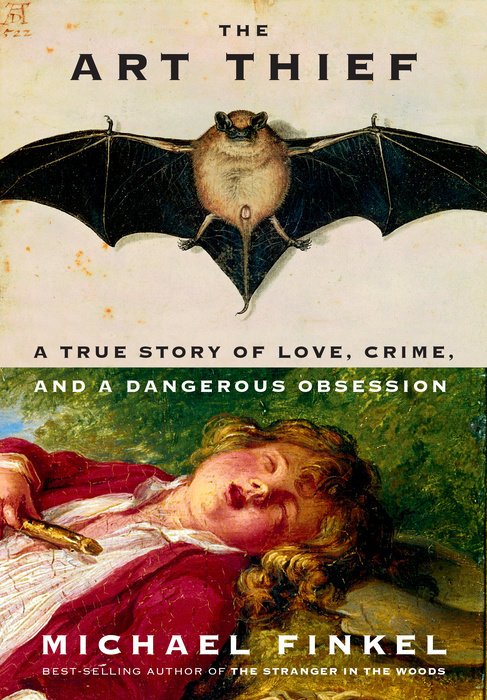The Art Thief: A True Story of Love, Crime, and a Dangerous Obsession by Michael Finkel
Review of The Art Thief: A True Story of Love, Crime, and a Dangerous Obsession by Michael Finkel
The Art Thief by Michael Finkel (2023). Published by Knopf.
There are so many books I’ve randomly stumbled upon throughout the years without ever having heard of them before the fact. The Art Thief is one of them.
One of the many weird pros about running a book blog and reflecting really hard about the books I’m reading is that I come to understand the books I’d enjoy, and I also have several avenues beyond social media where I can discover new things to read throughout my boring days.
The Art Thief I found specifically through The New York Times and their book section.
I like reading through what their recommendations are because I’ve found they somewhat align with my taste throughout the years, but I thought this one was specifically an interesting recommendation.
I hadn’t heard of the case and wanted to learn more—that’s the crux of my interest here. And so I found the audiobook on Libby, put my request in, and was happily listening to it over two months later.
Let’s get into the review!
Over the course of six years, Stéphane Breitwieser stole over two hundred works of art from European art museums.
This is a pretty brief book, as it clocks in at a little over two hundred pages, but it certainly can be entertaining throughout the course of its story. This is nonfiction, as everything in the book really happened.
The focus is Stéphane, who is a French art thief. Each of the chapters focuses on a different kind of heist throughout his career as a thief. He began in 1995, and continued all the way up until 2001 stealing from museums across from Europe.
Finkel uses psychologists and outsiders to provide commentary about what might have motivated him to do what he did. Stéphane didn’t really plan these major heists.
He brought his girlfriend along with him to many, then he just kind of wandered around the museums and did things spontaneously. For some reason, he also never did this for profit.
As we learn throughout the chapters, Stéphane was very passionate about art. He never planned on selling the work he stole, and even kept them in his homes. His mother thought he had bought everything legitimately, so she never questioned why her son had all of these pieces of art in a dark room.
A lot of the pieces he stole were also not that big, and if they were paintings, he would often cut through the frames in order to get access to the painting. He never targeted the bigger, more popular museums because the smaller ones had less security, ultimately allowing him to get away with it.
Eventually, though, everyone gets caught with doing such acts, and Stéphane was one of those. Some of the artwork had a tragic ending because of this—when he was in prison, his mother, having discovered what exactly her son had done, decided to take matters into her own hands.
And that was how the world lost some of its most valuable pieces of art to the garbage disposal.
Overall Thoughts
I knew nothing about this story going into it, but I’m glad I listened to it as an audiobook. It definitely fit within podcast vibes throughout the course of my listen/read.
I don’t think this is a book I would be returning too, though. I enjoyed it in the moment and after reading it, but it didn’t really hold a value when it comes to rereading for me.
That doesn’t mean I wouldn’t recommend the book: I would if you’re into these kinds of stories. It was quite entertaining, but I don’t know if I would return to it.
Go read it if you’re interested!
Follow me below on Instagram and Goodreads for more.


![Jeju-do (제주도) is one of those places that reminds you of how stunning the world is
[7.12.2024 부터 7.14.2024 까지]](https://images.squarespace-cdn.com/content/v1/5ea1f794501b7153b29e7cd7/1721033601522-554E76HR01JUHDWZBJ1I/image-asset.jpeg)









